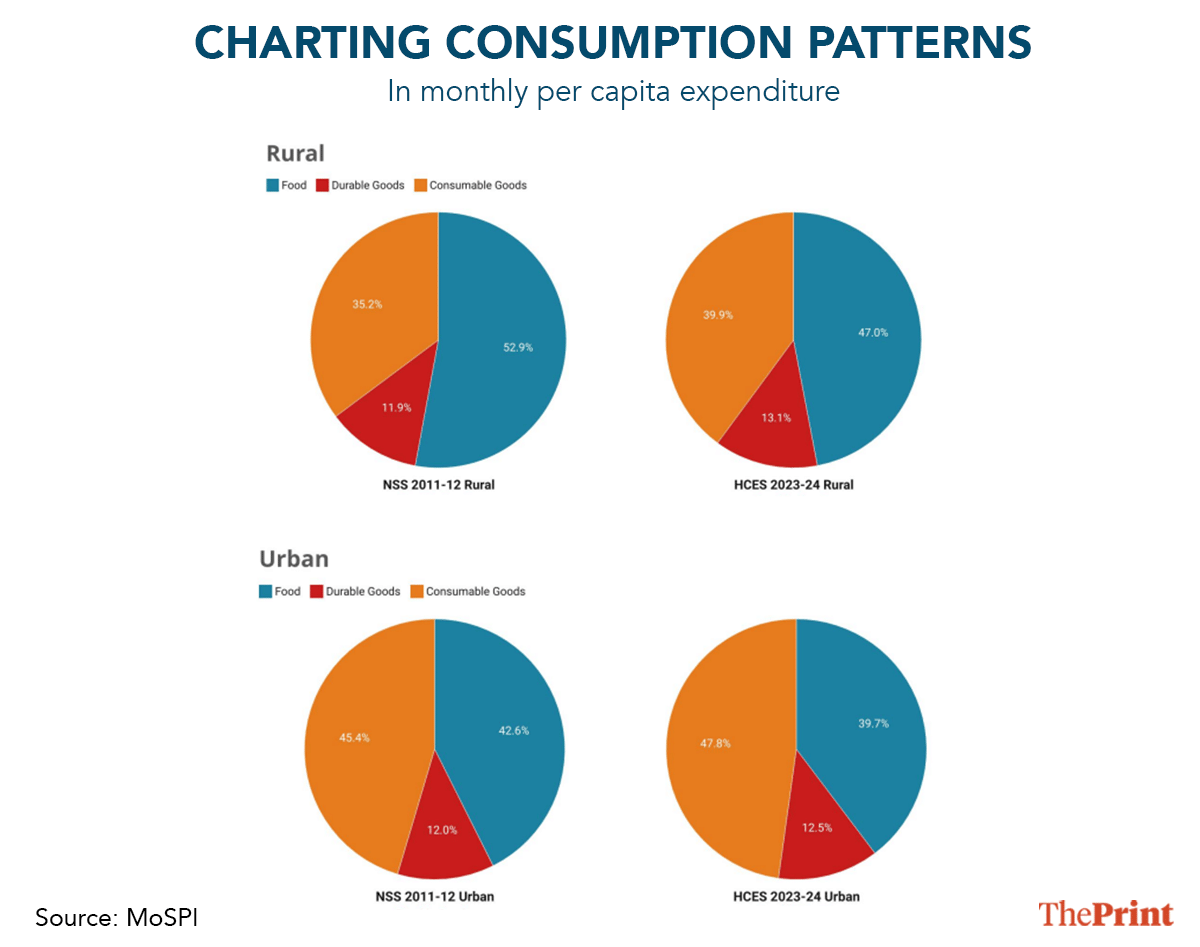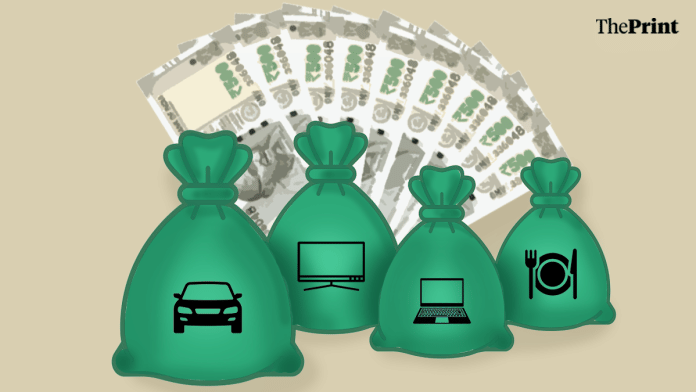New Delhi: More than half of Indian households now own motor vehicles, with rural areas recording a threefold surge over the past decade that has narrowed urban-rural divide in the country, according to a new report published by PM-Economic Advisory Council (PM-EAC) Monday.
The share of households owning two-wheelers or cars crossed the halfway mark in 2023-24 across both cities and villages, states the working paper authored by PM-EAC member Shamika Ravi and Sindhuja Penumarty, a young professional working with PM-EAC. The paper has compared the Household Consumption Expenditure Survey 2023–24 with 2011–12 and found significant advancements in spending on durables goods and ownership of key durable assets.
In rural India, vehicle ownership surged from 19 percent in 2011-12 to 59 percent in 2023-24. Urban households also saw a significant rise, with ownership increasing from 40.1 percent to 68.2 percent during the same period, the paper titled ‘Changes in Durable Goods Ownership in India’ found.
Motor vehicles recorded the fastest growth among household durable assets over this timeframe. “Better market access, road infrastructure and access to vehicular finance are likely drivers of improved ownership levels across the country,” the report said.
The study highlighted an urban-rural convergence in vehicle ownership across many states. In Haryana, Telangana and Punjab, it said, rural households now own more motor vehicles than their urban counterparts.
Also Read: 172 countries & counting, India looks to hit new record in rice exports. But there’s a flip side
Television ownership declines in cities
The report tracked ownership patterns across multiple household assets, including televisions, refrigerators, air conditioners, mobile handsets and laptops.
Television remains the most widely owned household durable asset in India. But urban ownership declined from 80.4 percent in 2011-12 to 78.5 percent in 2023-24, even as rural ownership grew from 49.6 percent to 61.1 percent during the same period.
Urban households in 11 states/UTs — Telangana, Odisha, Kerala, Gujarat, Jammu and Kashmir, Jharkhand, Tamil Nadu, Haryana, Karnataka, Rajasthan and Maharashtra – registered a decline in television ownership.
This drop coincides with the increase in mobile phone ownership, which is nearing universal access in both rural and urban areas.
Urban mobile handset ownership grew from 92.2 percent in 2011-12 to 97.7 percent in 2023-24, while rural ownership surged from 77.6 percent to 96.5 percent.
“The trend of falling television ownership in many states and universal mobile access finds strong support for the idea of the television screen being replaced or at least supplemented by mobiles as the medium of information and entertainment,” the report said.
Telangana was the only state to see a decline in urban mobile ownership, falling by 3.8 percentage points, in 12 years.
Despite India’s growing digital focus, laptop and personal computer adoption remains slow. Urban laptop ownership grew by just one percentage point, from 14.9 percent in 2011-2012 to 15.9 percent in 2023-2024, while rural ownership inched up from 1.5 percent to 2.3 percent during the same period.
The report attributed the slow growth to limited know-how, a steeper learning curve and the specialised nature of laptop applications.
Shifts signal middle-income transition
The report highlighted a major shift in household spending patterns, with the share of food in monthly per capita expenditure (MPCE) falling below 50 percent for the first time across both rural and urban sectors.
Rural food expenditure dropped from 52.9 percent in 2011-12 to 47 percent in 2023-24, and in urban areas, food spending declined from 42.6 percent to 39.7 percent.
Household spending on consumables such as fuel, light, medical and education-related items grew from 35.2 percent to 39.9 percent in rural areas and from 45.4 percent to 47.8 percent in urban areas over the 12 years.
Spending on durables — including clothing, footwear, personal electronics, transport equipment and household appliances — also rose. The share of MPCE on durables grew from 11.9 percent to 13.1 percent in rural areas and from 12 percent to 12.5 percent in urban areas.
“These shifts in long-term consumption patterns and diversification of the consumption basket are markers of India transforming into a middle-income country. These changes represent shifting priorities and aspirations for consumption among Indian households and improvements in quality of life,” the report said.

The analysis used unit-level data from the National Sample Survey (NSS) 68th round conducted in 2011-12 and the latest Household Consumption Expenditure Survey conducted in 2023-24.
With domestic demand contributing nearly 70 percent of India’s GDP, according to the report, the evolving spending patterns suggest significant implications for economic policy and growth.
“Evidence of growth in consumption of durables is an encouraging trend. Once seen as a luxury good, widespread mobile phone ownership across both rural and urban areas is the most significant trend as people see it not just as a means of communication and entertainment, but also of productivity. Of course, policy reforms by Centre and states must continue,” said Deepak Maheshwari, senior policy adviser at think-tank Centre for Social and Economic Progress (CSEP).






